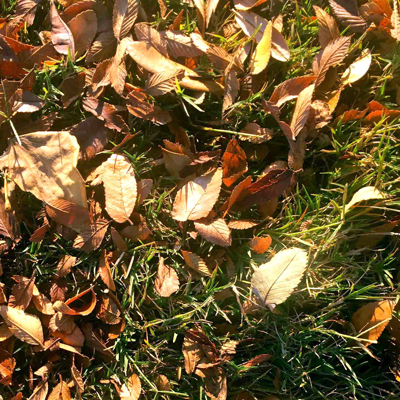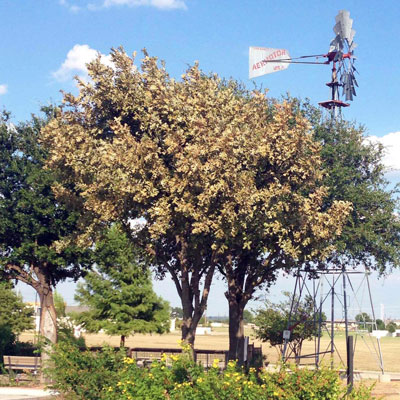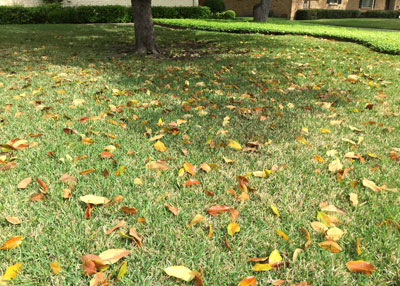Question of the Week – Number Two: September 23, 2021
“Why are so many trees dropping their leaves early this year?”
I’m really being asked this a lot in the past week or two. It depends on the types of trees, where you are and what your weather conditions have been.
For one thing, many of our trees are still struggling from damage done by last February’s cold. They leafed out as best they could in the spring and early summer, but the hot weather has taken its toll.
Whether they’ll be able to recover and heal is something we may not know for a while. In the meantime, you may want to have a certified arborist look at them to be sure that they’re safe to leave standing over the winter.
But let’s cover some of the other more conventional situations.

• Cedar elms were hit by powdery mildew earlier this summer, and many of their leaves have started to turn yellow prematurely. No call to action now. They’ll be just fine.

• American elm, chinquapin oak, bur oak and sycamore leaves have been yellow or tan for a couple of months, in most cases due to damage done by lace bugs. You’ll still be able to see the black excremental specks on the backs of the leaves. The lace bugs have done all their feeding by now, so again, there is nothing to be done at this time.
• Pecans are dropping their foliage all across Texas. This is just what pecans do toward the tail end of summer, usually about the time you begin to see the sticky honeydew drippage falling onto windshields and patio furniture beneath the trees. It would be great if they held onto their leaves a few weeks longer, but it’s not worth trying to spray for the aphids that give off the honeydew.

• Cottonwoods, fruitless mulberries, catalpas, silver maples and other large-leafed and/or fast-growing trees have been dropping leaves since mid-summer. It’s their reaction to hot, dry weather. The trees just can’t pull the water through their systems fast enough. They start shedding part of their responsibility when the weather becomes challenging. Deep soaking is about your only remedy, and even it can only go so far.
